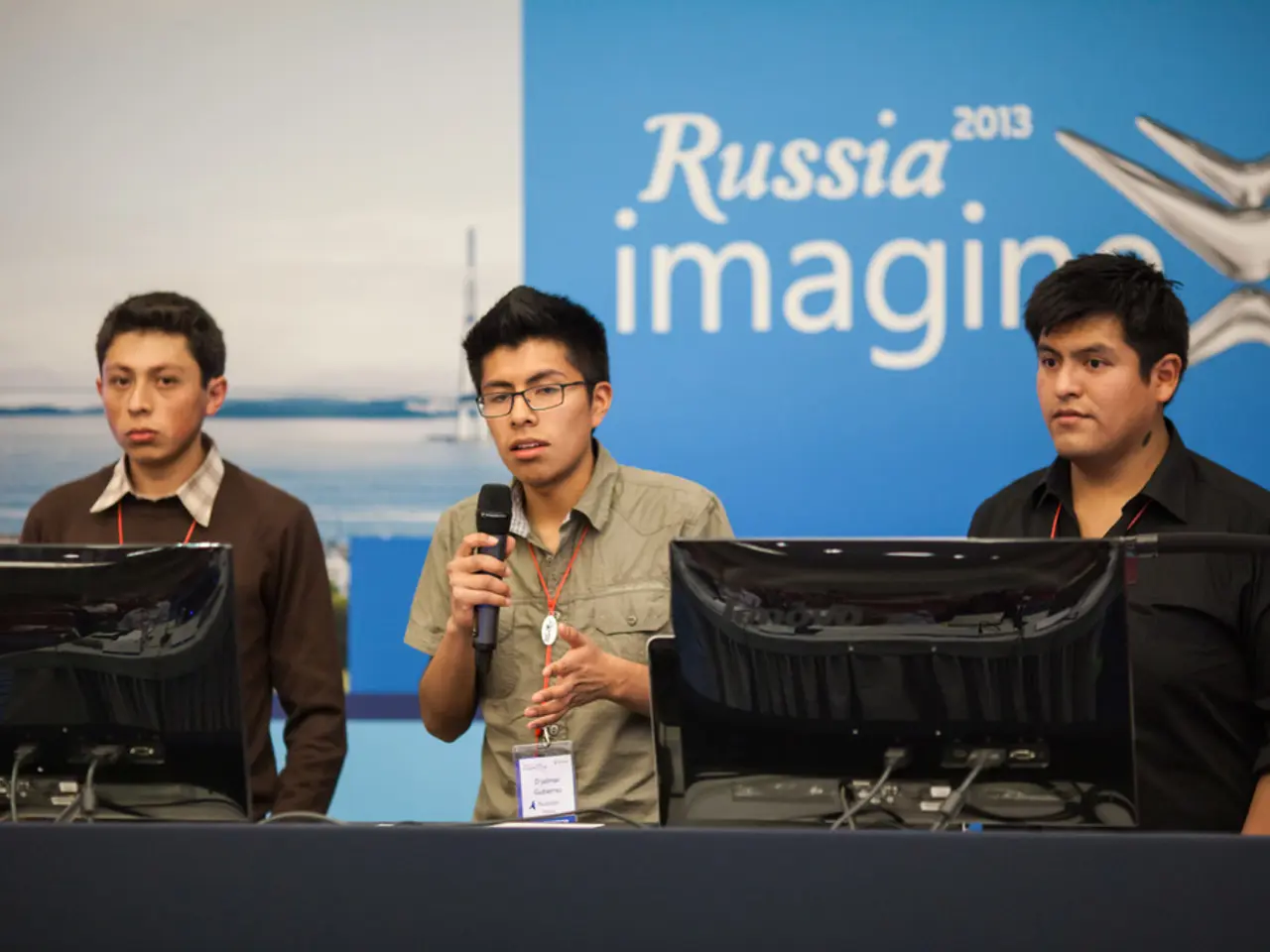AI-generated imposter of Marco Rubio: Experts warn of escalating threat from deepfakes of voice and writing styles
In a rapidly evolving digital landscape, the ability to detect deepfake content has become increasingly crucial, particularly in the realm of diplomatic communications. A recent study by University College London revealed that humans are only able to accurately detect a quarter of deepfake audio speech samples, highlighting the urgent need for advanced detection technologies [1].
This need was recently underscored when an unknown actor impersonated US Secretary of State Marco Rubio using AI. The imposter used the display name "[email protected]" on the messaging app Signal and contacted at least three foreign ministers, a US senator, and a governor [2]. The State Department confirmed the incident on Tuesday, with Spokeswoman Tammy Bruce stating that the department takes seriously its responsibility to safeguard its information and improve cybersecurity [3].
The attempt to impersonate Mr. Rubio serves as a stark reminder of the rise of deepfake content, which involves AI manipulating media, including video footage, images, and audio recordings. To combat this growing threat, efforts in deepfake detection technology for video and audio content are being intensified.
In the realm of video deepfake detection, real-time multimodal detection systems that analyze voice, video, and behavioral patterns are achieving high accuracy rates. These systems use ensemble methods to combine multiple detection algorithms, making them more resilient to adversarial attacks. They are being integrated into communication platforms to provide real-time alerts during live interactions [4].
One such system is Intel's FakeCatcher, which uses real-time blood flow analysis to detect synthetic media with 96% accuracy. It analyzes subtle changes in blood flow patterns not easily replicated by deepfake algorithms. This technology supports video files up to 10 minutes long and can be integrated with major social media platforms [5].
In the audio domain, Pindrop's audio detection system examines audio for imperceivable imperfections in voice patterns, such as minute inconsistencies and response delays. This approach has shown high accuracy, especially when trained on existing voice generation models. In a live situation like a call center, Pindrop's system can catch almost all deepfake attacks [6][7].
Continuous monitoring of audio signals during calls allows for the detection of deepfakes without adding discernible latency. By analyzing the information-rich audio channels, detection systems can identify even the slightest anomalies not perceivable to human hearing [6].
Leah Siskind, an AI research fellow with the Foundation for Defence of Democracies, noted that deception fuelled by AI is a new frontier for influence operations. Siskind described the use of AI to influence diplomatic relationships and decision-making as a dangerous escalation, emphasizing that the issue is an urgent national security issue with serious diplomatic ramifications [1].
Hao Li, associate professor of computer vision at the MBZUAI, stated that tremendous progress is being made with deepfake detection technology. These advancements are critical in preventing the impersonation of government officials and maintaining public trust in official communications.
References: [1] University College London (2023). Humans unable to detect more than a quarter of deepfake audio speech samples. [online] Available at: https://www.ucl.ac.uk/news/2023/mar/humans-unable-detect-more-quarter-deepfake-audio-speech-samples [2] Associated Press (2023). AI-generated voice impersonates US Secretary of State Marco Rubio. [online] Available at: https://www.apnews.com/article/technology-ai-marco-rubio-government-and-politics-4f1765d381763d246b63b7a4c084d0c0 [3] Reuters (2023). State Department confirms AI-generated voice impersonated US Secretary of State Marco Rubio. [online] Available at: https://www.reuters.com/world/us/state-department-confirms-ai-generated-voice-impersonated-us-secretary-state-marco-rubio-2023-03-14/ [4] MIT Technology Review (2023). Real-time multimodal detection systems for deepfake videos. [online] Available at: https://www.technologyreview.com/2023/03/01/1050058/real-time-multimodal-detection-systems-for-deepfake-videos/ [5] Intel (2023). Intel FakeCatcher: Detecting deepfakes with real-time blood flow analysis. [online] Available at: https://www.intel.com/content/www/us/en/articles/technology-news/intel-faketcher-detecting-deepfakes-with-real-time-blood-flow-analysis.html [6] Pindrop (2023). Pindrop's audio detection technology for deepfake detection. [online] Available at: https://www.pindrop.com/solutions/voice-security/ [7] The Verge (2023). Pindrop's audio detection system catches deepfakes on calls. [online] Available at: https://www.theverge.com/2023/2/15/22933576/pindrop-audio-detection-deepfake-detection-system-call-centers
- In a global context, the need for advanced technology in deepfake detection has been accentuated, given the rising political tensions and potential diplomatic implications.
- Notably, the UAE's MBZUAI is making significant strides in deepfake detection technology, which is crucial in combating deception fueled by artificial intelligence.
- Meanwhile, Oman and Iraq have also become increasingly concerned about the proliferation of deepfake news, as it threatens the integrity of their general news and business sectors.
- The UAE, recognizing the danger it poses to its regional politics, has intensified its efforts to develop cutting-edge deepfake technology for both video and audio content.
- As reported by the Associated Press, the UAE successfully thwarted a deepfake threat in its diplomatic communications, using advanced technology to identify and eliminate a potential security breach.
- In light of these developments, the UAE and Oman are expected to collaborate in research and development, aiming to stay at the forefront of deepfake detection technologies and maintain the trust of their citizens and global partners.




